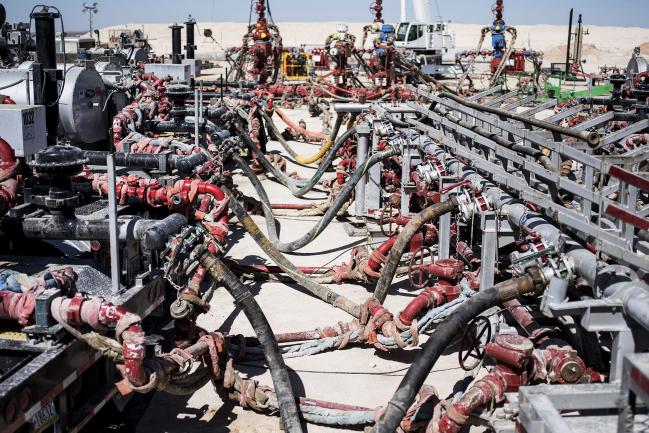(Bloomberg) -- OPEC will have to decide whether to extend global oil cuts without knowing whether they’re triggering a new flood of rival supply from U.S. shale producers.
Analysts gave differing outlooks for U.S. shale output in a briefing to officials from the Organization of Petroleum Exporting Countries, stoking concern ahead of OPEC’s planned meeting on Nov. 30, according to people with knowledge of the discussions. The analysts included Andy Hall, the veteran crude trader who closed his hedge fund this year, said the people, who asked not to be identified because the briefing was private.
The duration of any extension in output limits will depend partly on estimates of future supplies of U.S. shale and other competing crudes. OPEC and allied producers including Russia are to gather next week in Vienna to assess oil markets and decide whether to extend their historic cuts beyond March. Several OPEC ministers, including Saudi Energy Minister Khalid Al-Falih, have expressed support for longer cuts, which took effect in January.
Some OPEC officials are uneasy that no one seems to have a clear view of just how much shale oil will be hitting the market, the people said.
Forecasts of 2018 growth in shale output range from 500,000 barrels a day to as much as 1.7 million barrels a day, complicating any forecasts, Hall said at the briefing, according to the people with knowledge of his comments. Hall, once known in the oil industry as “God” for his lucrative trades, said the U.S. Energy Information Administration is underestimating this year’s growth in shale oil by about 300,000 barrels a day, according to the people.
Wide Range
Other participants in the briefing included Per Magnus Nysveen, head of analysis at Rystad Energy AS; Amrita Sen, chief oil analyst at consultant Energy Aspects Ltd.; and analysts from Citigroup Inc (NYSE:C). and Morgan Stanley (NYSE:MS), according to the people with knowledge of the discussions on Wednesday in the Austrian capital.
Rystad’s Nysveen said shale output will gain on average by about 1.2 million barrels a day each year through 2020, due largely to producers’ more efficient use of capital, according to the people. Shale growth will remain stronger in the U.S. than elsewhere because while other regions have good geological prospects, they lack America’s above-ground infrastructure, said Marianne Kah, the former chief economist for ConocoPhillips (NYSE:COP), according to the people.
Cuts by OPEC and other suppliers to clear a glut have helped lift oil from lows of less than $30 a barrel last year. With West Texas Intermediate crude trading at more than $55 a barrel, producers in the U.S. are drilling more wells to boost production.
The U.S. is set to pump about 9.2 million barrels a day on average this year, before raising output to a record 9.9 million in 2018, the EIA said in the short-term energy outlook it issued this month. U.S. crude production climbed to a record 9.66 million last week, the EIA said.
